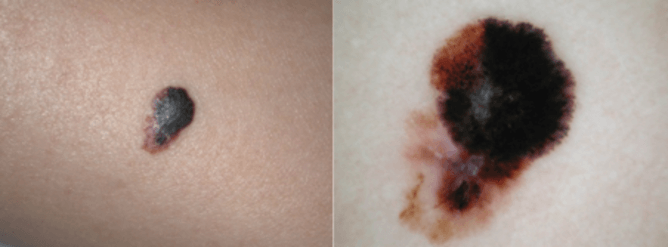This is a fantastic public health victory. People still die, but that is from metastatic melanoma, the aggressive form that spreads from the skin to other organs, such as the lung, liver, or brain.
Despite what you read when activist groups create some new war on food or chemicals, cancer prostate to breast to lung, the three other common forms of cancer, but improvements in melanoma top them all. In that time we've had 10 new therapies which either harness the body's immune system to fight the disease or directly target melanoma cells that have a specific gene mutation.

Asymmetry and color variation typical of melanoma. Peter Soyer
About 100,000 new cases were occurring every year. Once tumors spread throughout the body, melanoma had been notoriously difficult to treat, and conventional treatment methods like chemotherapy have limited effect against the disease. The newer therapies, which came into use in the last decade, are far more effective and less toxic than standard chemotherapy. And they are more expensive but nowhere near as expensive as the last week of almost any cancer patient's final year. The drugs fall into two broad categories: those that target the BRAF gene, which is mutated in a little less than half of melanoma patients; and immune checkpoint inhibitors, which prevent melanoma tumors from tricking the immune system into ignoring the cancer.
For the study, researchers analyzed new cases and deaths from melanoma collected by the National Cancer Institute and the Centers for Disease Control and Prevention. These numbers spanned from 1986 to 2016 and involved nearly a million Americans. The steep drop in deaths cannot be readily attributed just to better detection methods because death rates did not drop steadily over time, but sharply. In addition, many health care groups have been pushing for early detection exams since the 1980s, so the timing of these declines matches up better with the introduction of the new therapies.





Comments